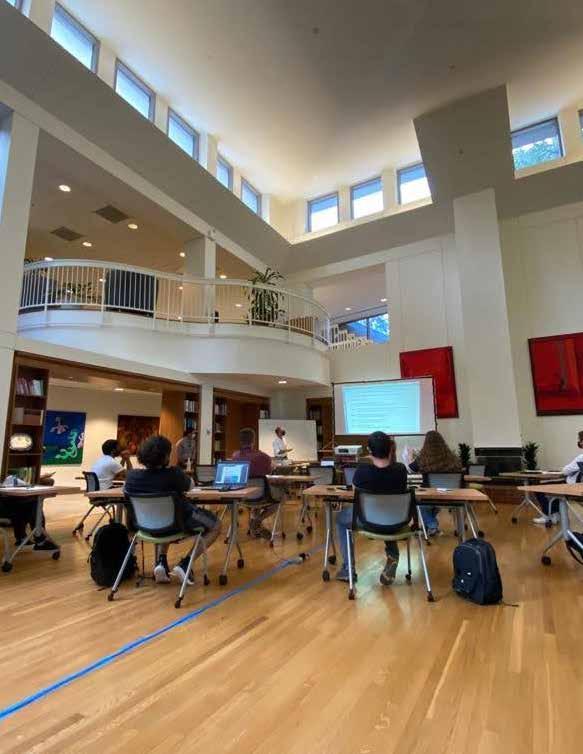
2 minute read
Supporting Hospital Response to COVID-19
George Mason University
Professor Elise
Miller-Hooks and her team have been studying and modeling the flow of patients through American hospitals in times of crisis since 2014.
Now, in the face of the COVID-19 pandemic, they are collaborating with Mersedeh Tariverdi, a senior data scientist in the Health, Nutrition, and Population Group at the World Bank, to launch a web portal—the MASH-Pandemics portal—that will support models that aid hospital responses to the pandemic.
The team’s work supports evidence-based decision making, informed by the models, to rethink and facilitate hospital operations in utilizing limited critical resources as demand surges.
Only hours after President Donald Trump declared a national emergency on March 13, graduate students working with Miller-Hooks began incorporating personal protective equipment, ventilators, and COVID-19 patients with their care paths into the models.
“We’re working as fast as we can because the need is so urgent and the crisis is enormous. This effort is about health care worker safety and helping the hospitals cope with the pandemic,” says Miller-Hooks. “It’s about saving lives, as well as the efficient and equitable allocation of resources.”
The work can help hospitals to best cope with surge demand in spite of limited resources. It can aid decision makers in regional response and hospital collaboration planning with health care facilities that offer various levels of care (e.g., primary health care).
It can also inform decisions on the mobilization of critical supplies, supplemental space, and the dispatch of frontline health care workers and other first responders to where they are needed the most. While working as a PhD student under Elise Miller-Hooks’s supervision, Mersedeh Tariverdi (above) developed key models that now serve as the backbone for the portal.

Hospital administrators and others working in an official capacity can request runs of the MASH-Pandemics models through the portal to help them with decision making tailored for their hospitals or a group of hospitals working in collaboration. This effort builds on previously developed sophisticated discrete-event simulation models to replicate operations in the ongoing COVID-19 pandemic.
MASH-Pandemics was developed on a patient-based, resourceconstrained, multiunit hospital model originally designed for assessing hospital preparedness to serve emergency patients in surge, pandemic, mass-casualty incident, and disaster events. Miller-Hooks says their models are unique for several reasons. “If you look at most other hospital models…they generally focus on single key units and are designed for routine operations,” she says. “Our model tracks patients along their entire care path, along with physical resources and staff through 10 essential units. The models are very detailed…to capture the complexities of their operations. We do not know of other models that have considered mass casualty incidents at this level.” The effort is supported by the National Science Foundation. For more information about the project go to mash-pandemics. g
patient-basedmultiunit hospitals

pandemicstrategies










